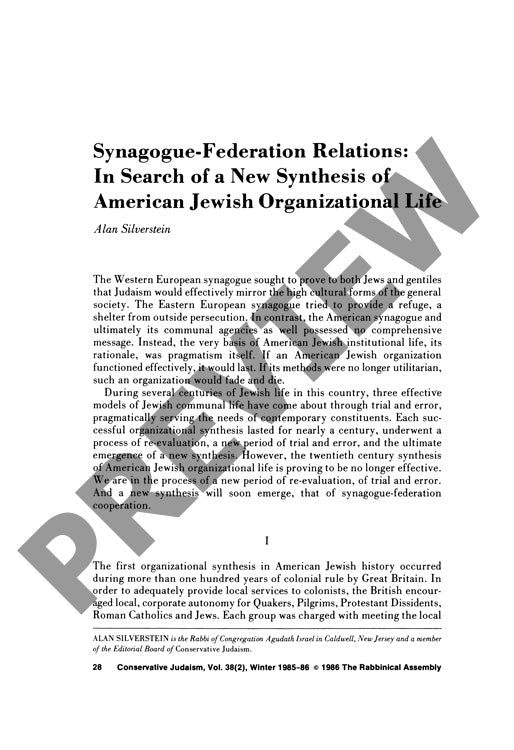Synagogue Federation Relations in Search
Couldn't load pickup availability
American Jewish institutions have historically evolved through three distinct organizational models, each shaped by the social and political context of its era. From colonial-era synagogues serving as comprehensive community centers, to nineteenth-century denominational divisions, to twentieth-century specialized institutions, these adaptations reflected pragmatic responses to changing needs. Yet the current model of institutional separation between synagogues and federations proves increasingly inadequate for contemporary challenges. Historical analysis reveals how post-World War II affluence, secularization, and demographic shifts have created inevitable tensions between expanding synagogue and federation domains. Five critical trends now demand institutional cooperation: economic pressures requiring shared resources, feminist calls for family support services, the imperative to engage disconnected youth and new immigrants, growing demand for pluralistic religious services, and emphasis on life-long learning. The emergence of successful synagogue-federation partnerships signals a fourth major synthesis in American Jewish organizational life. This new paradigm demonstrates that bridging social work and rabbinic traditions is essential for effectively serving diverse Jewish needs in the modern era.

More Information
-
Physical Description
-
Publication Information
Published 1985-1986
ISBN
-
Publication Credits
Alan Silverstein

